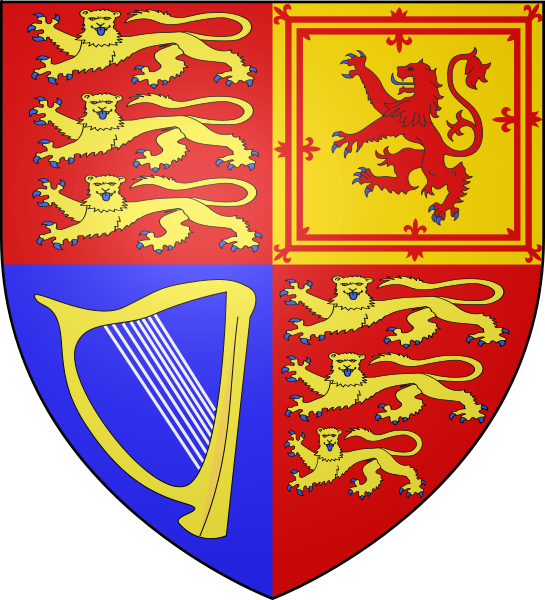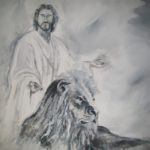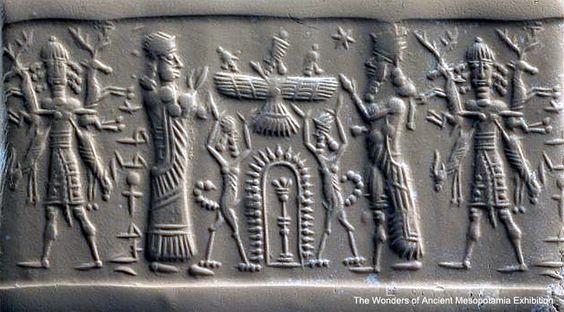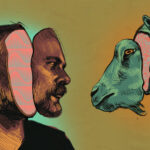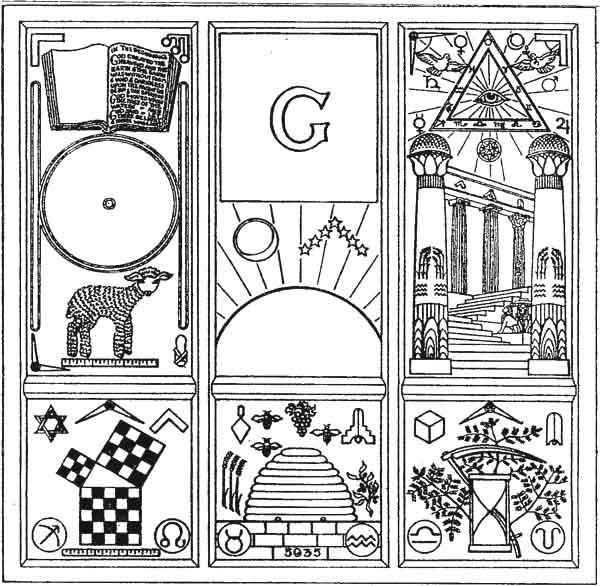The symbol called the Double Headed or Double Axe is one of the oldest, most used, and least understood symbols that can be found all throughout history and especially in regards to true history, mythology, and Masonry. Perhaps nowhere in the world has more of these symbols been found with supporting archeology, artifacts, and stories than that of Mount Ida and Knossos on the island of Crete in Greece.
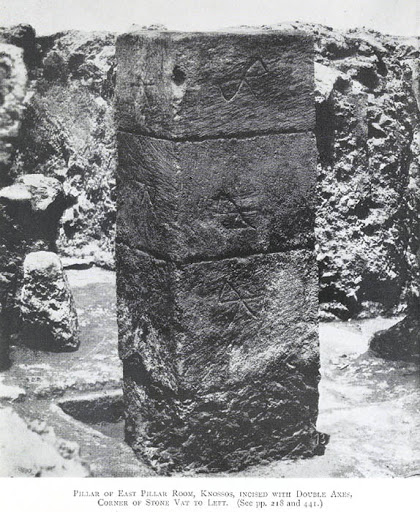
One of the oldest, Holiest, and most ancient Masonic places in all of the Western world.
In this essay, I will put forth research showing that the Double Headed or Double Axe is a symbol for this specific Tribe of Ancient Masons who honored their homeland and sacred grounds that were situated at Mount Ida on Crete for thousands of years. Therefore, I propose that this “symbol (ideogram or pictogram) represents a Mountian or God’s Mountian” which was the Holy lands of their ancestors for millennia who had walked, prayed, and their bones were buried.
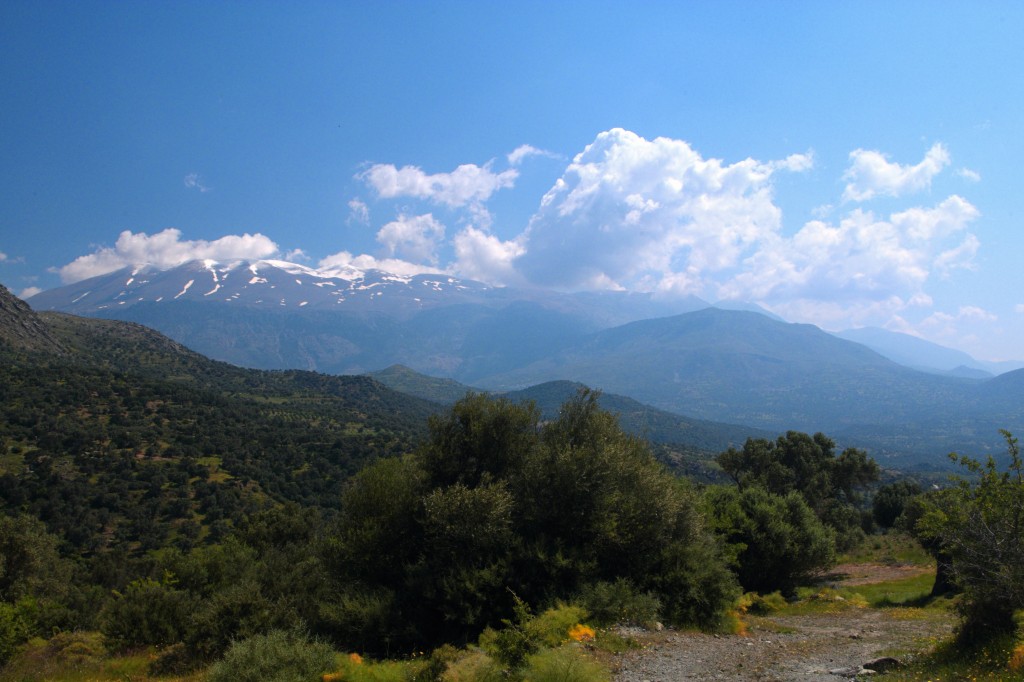
An ideogram or what is known as a pictogram (pictogramme) is an ancient form of communicating via a drawing that conveys its meaning through its pictorial resemblance to a physical object. Many examples of ideograms can be found all throughout ancient history in prehistoric drawings, paintings, and Egyptian and Phoenician (Cretan) tablets and ruins.
You will find that this specific symbol for a mountain has been used for thousands of years and can be found in various forms as an ideogram for a mountain in many different ancient cultures all around the world like in Ancient Egypt.



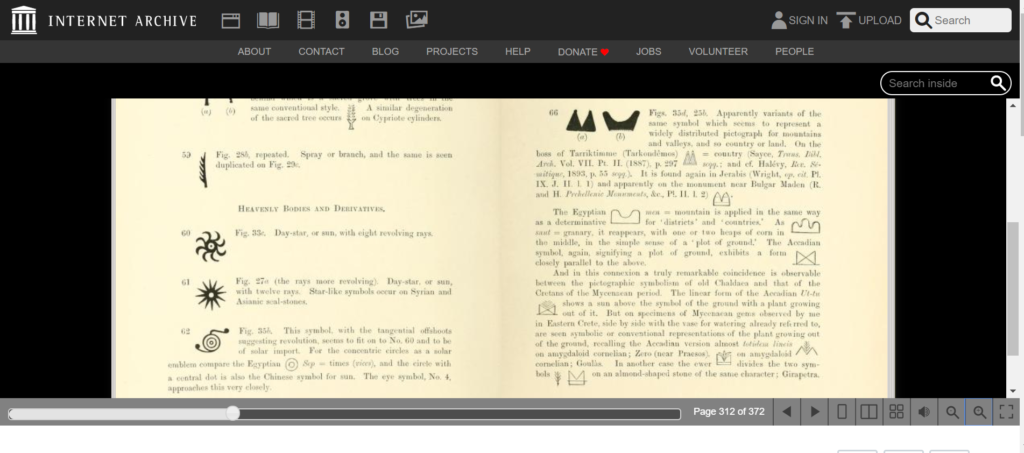
Here is the Turkic Ideogram, meaning ART, its English translation is ‘upland’, ‘mountain’ or ‘mountain pass.’
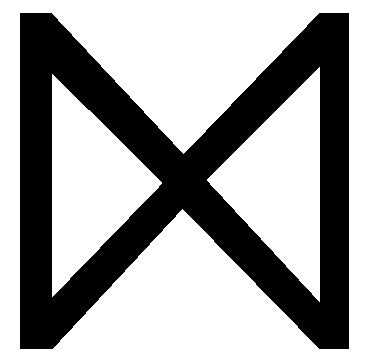
I have written extensively about Mount Ida and the Tribe of Judah detailing my research and the connections to Freemasonry in articles such as The First Jews of Crete, Lost Tribe of Judah Found: The Bedas, The Masonic Archons of the Tribe of Judah, The Widow’s Son, Giblim: The Bible’s First Masons in the City of Our Lord and Jesus: The Tribe of Idea (Judah).
The people of the Mountain called Ida in Crete were who Josephus called the Idaens and is the same name where we derive Judah and the Tribe of Judah in which King David, Solomon, Hiram Abiff, and Jesus are said to be members ie: ancestors. Hence, I contend that like all exoteric religions such as Catholicism and Islam, Judaism and esoteric Masonry are ancient forms of ancestor and or hero-worship.
As Arthur Evans writes in his book, Mycenaean Tree and Pillar Cult and its Mediterranean Relations, this may have been first dedicated to the cult of the ancestors of the household and was a highly developed cult of departed Spirits. Evans had said;
“Among the greater monuments or actual structural remains of the Mycenaean world hitherto made known, it is remarkable how little there is to be found having a clear and obvious relation to religious belief. The great wealth of many of the tombs, the rich contents of the pit-graves of Mycenae itself, the rock-cut chambers, the massive vaults of the bee-hive tombs, are all indeed so many evidences of a highly developed cult of departed Spirits.
The pit-altar over grave IV. of the Akropolis area at Mycenae, and the somewhat similar erection found in the Court-yard of the Palace at Tiryns, take us a step further in this direction; but it. still remains possible that the second, like the first, may have been dedicated to the cult of the ancestors of the household, and it supplies in itself no conclusive evidence of a connection with any higher form of worship.” (1)
In the Scripture, the region of Mount Ida on Crete is called Edom or Idumea (Greek: Ἰδουμαία, Idoumaía; Latin: Idūmaea). It was a Semite-inhabited historical region of the Southern Levant, located south of Judea. It is here at Edom or Mount Ida during the time of King David, that set the stage for the temple to be built on Mount Zion, “which He [God] loved,” in the tribe of Judah (Psalm 78:67-70). God chose David to be His shepherd and Jerusalem (Mount Zion) for His place to dwell. God also chose David to hold the “scepter,” a symbol of kingship that would always remain in the tribe of Judah (Genesis 49:10; Psalm 89:34-37).
As time progressed, the people, and Masons of Mount Ida would come to be known as the Jews who are said to have formed a mass exodus from Crete which was documented by Tacitus in his book, “The Works of Flavius Josephus.” Tacitus had said;
“The tradition is, that the Jews ran away from the island of Crete, and settled themselves on the coast of Libya, and this at the time when Saturn was driven out of his kingdom by the power of Jupiter: an argument for it is fetched from their name.
The mountain Ida is famous in Crete; and the neighboring inhabitants are named, which, with a barbarous augment, becomes the name of Jud [Jews.] Some say they were a people who were very numerous in Egypt, under the reign of Isis, and that the Egyptians got free from that burden by sending them into the adjoining countries, under their captains Hierosolymus and Judas.”
Since ancient times, animals, people, trees, weapons, and tools were used as national and mythical symbols to represent a tribe or people. The more warlike the culture, the more fierce the animal totem, tool, and or weapon used to symbolize the tribe. Much like modern gangs use a symbol or logo to collectively represent their membership and allegiance to the gang, these ancient symbols acted in a similar manner for specific tribes like those from Ancient Crete.
An island that was once known as the naval (center) of the world and a people who I like to call the home of Masonry, the First Freemasons, and their main ceremonial and heraldic symbol – the double ax. A weapon and tool that they had venerated for its many uses in both building and war which symbolized the Cretan culture that has been well documented over the last 2,500 plus years.
In researching the Cretans, I have found that the main consensus amongst researchers and archaeologists was that they were a seafaring, war-making, building, and trading society. Some experts like Sir Arthur Evans have called them a Tree and Pillar cult which would somewhat coincide with my theory that they were the First Freemasons like the infamous Daedalus and it is from them that we derive the Masonic mythologies of the Phoenician (Sidonian, Hebrew, Cretan, Tyre, Minoan) King Hiram Abiff and King Solomon who are venerated by their Masonic descendants.
Some of the first and most prized creations such as the boats and buildings they had built and were famous for were created out of wood which I believe they eventually started venerating trees as “sacred trees.” We know of several varieties on the island of Crete such as the olive and fig trees but the most esteemed wood came from the Cretan Cedar tree (Cedrus libani). In the time of Vitruvius “cedars” were growing in Crete, Africa, and Syria.
Cedar was the preferred tree because it simply lasted the longest and did not rot so it was used in making building and statues designed for duration. Augustin Calmet had written, “Cedar was used in making statues designed for duration. The temple of Jerusalem, and king Solomon’s palace, were built with cedar. The roof of the temple of Diana, at Ephesus, was of cedar, according to Pliny. Josephus says, that Solomon multiplied cedars in Judea till this tree was as common as sycamores, which are very general there.”
In fact, the famed statue of Britomortis made by the Mason Daedalus was said to be made of wood and I contend it was Cretan cedar. I also believe the Biblical town of Cedron (Kedron, Cedres) was located here. According to a member of Plato’s Academy at Athens and the alleged successor to Aristotle, Theophrastus of Lesbos (Cos, Dia), Cedres was a mountain of the isle of Crete, near Mount Ida. He later states that the tree called cedar by the woodcutters of Mt Ida of whom he says were on of his chief sources in his research. (2)
Remnants of these Cedars of Crete can be found in places such as the unique Cedar Forest on the beautiful beach Elafonissi and the picturesque Kedrodasos beach located about 76 kilometers south of the city of Chania. The Cedar Forest is approximately three kilometers from Elafonisi eastwards.
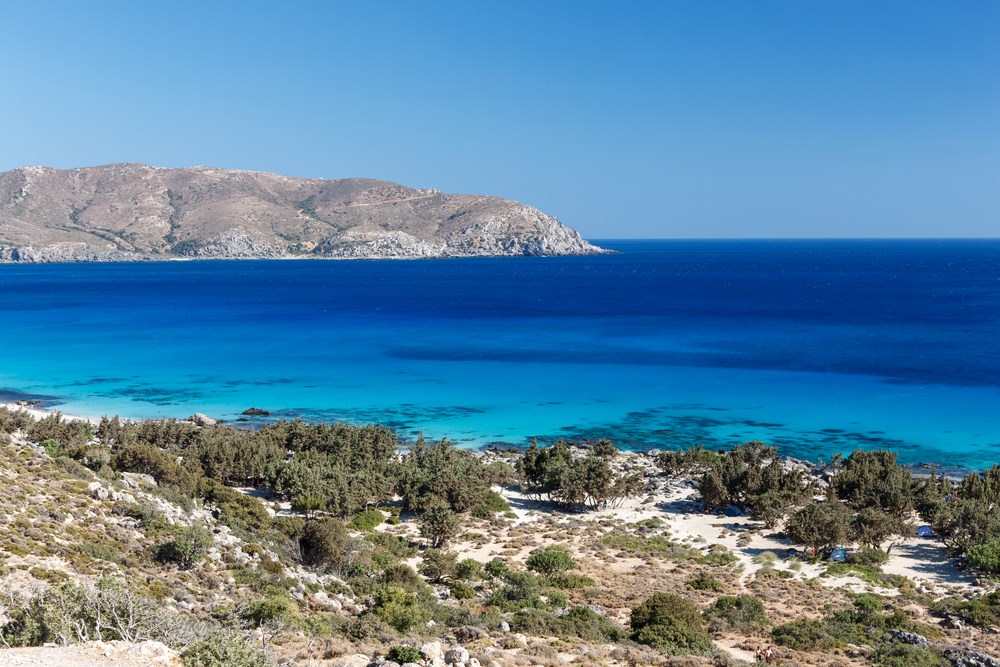
It is not uncommon in these areas of Crete to enjoy a beachside villa with an ocean view amongst the Cedar trees such as this rental I found at Grammeno Beach near Elafonissi.

Cedar trees became their number one source of timber because they never decay nor rot which they held as sacred and they are known allegorically in the Scripture as the Cedars of Lebanon. The Ark of the Covenant for the Tabernacle was made of cedar as a symbol of eternity, and the cedar wood was sacred among the Hebrews. The Ark of the Covenant for the Tabernacle was made of cedar. For these reasons, King Solomon used exclusively cedar timbers in the building of the Temple.
For we learn in 2 Samuel 5:11 that The Phoenician king Hiram of Tyre sent Lebanese cedar, carpenters and masons to Jerusalem to build a palace for King David and he also provided cedars and artisans to King Solomon for the construction of his own palace as well as the Temple in Jerusalem (2 Chronicles 2:3,7; 1 Kings 5:20). The Bible also informs us that Lebanese cedar timbers were commonly transported by sea.
The Book of Ezra reports that timbers were hauled to the Phoenician coast and then sailed to Jaffa for transport to Jerusalem. They gave money also unto the masons, and to the carpenters; and meat, and drink, and oil, unto them of Zidon, and to them of Tyre, to bring cedar trees from Lebanon to the sea of Joppa, according to the grant that they had of Cyrus king of Persia. (Ezra 3:7)
I believe that these creations made of wood, stones, and then metals were so prized and esteemed that they became not only religious objects of devotion but they very divine tools and weapons that they would use to conquer much of the world and propagate their race.
Evans writes in his book, Mycenaean Tree and Pillar Cult and its Mediterranean Relations about the Association of Sacred Tree and Pillar. He writes;
“In succeeding sections attention will be called to a whole series of Mycenaean cult scenes in which the sacred tree is associated with the sacred pillar. This dual cult is indeed so widespread that it may be
said to mark a definite early stage of religious evolution. In treating here of this primitive religious type the cult of trees and pillars, or rude stones, has been regarded as an identical form of worship.”
According to Plutarch, the Labrys (Greek: λάβρυς, romanized: lábrus) is another word for the double-bitted axe. (Greek: πέλεκυς, pélekus). Arthur Evans said the Double Headed Axe was also called the “Horns of Consecration” and that the word labyrinth is derived from labrys, and thus would imply “house of the double axe”. Sir James George Frazer had written that the double-headed axe was used by the Hittites, Carians, and Etruscans, and Cilician Hercules who through my previous research I have connected all these peoples as descendants of the Cretans (Phoenicians).
Here is a description from Sir Frazer of how abundant the double axe mason marks that were found on the Mason blocks of the Palace of Knossos;
“In excavating the great ” Minoan ” Palace of Knossos I was struck by the prominent position occupied by the double axe among the signs upon its blocks. It is much more frequent than any other sign. It occurs in several cases by openings of entrances and passages. It is the distinguishing mark of the largest existing hall. It is constantly repeated on the blocks of two pillars in two small adjoining chambers on the west side of the palace, which, as we now know, formed the supports of the two columns of the principal megaron of this quarter.
Several of the other signs found on the palace blocks, such as the spray, the star, the cross, and the trident, are of kinds which in later times appear as religious symbols, and it is possible that all these marks, like the dedications on the bricks of Babylonian buildings, may have fulfilled the function of consecrating the material.
That in many cases they were afterward covered with plaster does not affect this argument. Considering the exceptional sanctity of the double axe in Mycemean Crete, as evidenced by such finds as the hoards of votive axes brought to light in the axe sanctuary of Zeus and Rhea on Mount Dicta, its pre-eminent position on the palace blocks might well suggest a religious motive.” (3)
An old Gaelic axiom had symbolized how our ancestors had thought of these tools, weapons, and symbols when it was once written, “Every weapon has its demon” and Jupiter’s (Zeus) weapon and his sanctioned demons is the double axe.”
In ancient mythology, Jupiter who was also known as Zeus in Ancient Greece as the King of Gods and his army were called “Demons” who were both good and bad depending on their nature and subsequent free will.
Plato had said about Jupiter and his demons, “that when the great leader Jupiter drives his chariot swiftly in the heavens, he marches first, as disposing and taking care of all things, a vast host of gods and demons then follow, distributed into twelve parties, but that Vesta alone remains in the mansion of the gods.” According to Plutarch, “that according to divine nature and justice, the souls of virtuous men are advanced to the rank of daemons; and that from demons, if they are properly purified, they are exalted into gods, not by any political institution, but according to right reason.”
The Greek poet, Hesiod had written that the people of the Golden Age were transformed into demons by the will of Zeus (Jupiter), to benevolently serve mortals. In the Necronomicon, it is said, “The God of Jupiter is the Lord of Magicians, Marduk Kurios of the Double-headed Axe.” (Necronomicon, p. 30)
Magic can be simply defined as what you think and or create in your mind is then manifested by your will into reality by doing the actual physical work required to make your thought-forms into material forms. If we are to look at the history of building and Masonry, we can safely say that this art form is also magic and there is probably no older and or more important form of magic than Masonry.
The ancient symbol of Jupiter can be found on old Greek coins of the classical period (e. g. Pixodauros) as Zeus venerated at Labraunda in Caria (Crete) that numismatists call Zeus Labrandeus (Ζεὺς Λαβρανδεύς) stands with a scepter upright in his left hand and the double-headed axe in his right hand over his shoulder.
Since ancient times, Zeus was associated with Crete, Jupiter, the priesthood, magic, a mountain, stones, and a cave or and war to keep his concealment. It was on this same island where the infant Zeus (Jupiter) was born to the Goddess Rhea whose father Saturn or Cronos had sought to devour his son to prevent his ascent to the throne as king so his mother hid him in a cave on Mount Ida where he was protected by the priesthood called the Curetes and sometimes the Corbaynates, Cabiria, and Telchnines, to name a few.
With that said, I contend that these specific Cretans who used this symbol were the Masons of Judah (Mount Ida) who immigrated and imported their Freemasonic culture all around the world. Their Immortal Mason Marks can be still found to this day for anyone to witness whether it be in Knossos or in the stone cathedrals found all over the West that they had built.
To be an ancient Mason back in the time of Daedalus whether you created statues or had built homes, temples and even shipbuilders, you would have to be knowledgeable not only of the trees and stones you had worked with, but also the tools like the axe which was easily the number one tool for millennia that became one of their national symbols – the symbol for the mountain that gave them life, fame, and fortune.
SOURCES:
1. Mycenaean Tree and Pillar Cult and its Mediterranean Relations By Arthur J. Evans
2. THE GEOGRAPHY OF THEOPHRASTUS’ LIFE AND OF HIS BOTANICAL WRITINGS BY COSTAS A. THANOS DEPARTMENT OF BOTANY UNIVERSITY OF ATHENS
3. The Golden Bough: pt. IV. Adonis, Attis, Osiris. By Sir James George Frazer 1922 – Page 182
4. Other sources are linked to above and or will be published at a later date

Moe is the founder of GnosticWarrior.com. He is a father, husband, author, martial arts black belt, and an expert in Gnosticism, the occult, and esotericism.



